The Launch of the Mitosis Litepaper: A New Era for Programmable Liquidity

GMito, my friend!
I’m thrilled to share the launch of the LitePaper for the Mitosis Protocol — a project I deeply resonate with and have wholeheartedly dedicated myself to.
Before diving into the challenges and use cases presented by the team, I want to highlight that this LitePaper is packed with dense, highly technical content. And rightfully so — after all, a Crypto Protocol LitePaper with Mitosis’s potential and responsibility should be nothing less.
That said, to make it more approachable for us, the everyday users, I’ve aimed to simplify the complexities and present the content in a more digestible way, focusing on what truly matters: how to interact with the protocol and maximize yields.
For those who don’t know me, I’m febarce | Defi, a content creator specializing in crypto education. My mission here is to break down the LitePaper, making its knowledge more accessible and ensuring the community can easily grasp the key insights.
I’m beyond excited to contribute to Mitosis University, and I hope to guide you through this learning journey in the best way possible.
Enjoy the read!
Addressing Liquidity Challenges in the Crypto Market
Decentralized Finance (DeFi) has revolutionized financial markets, yet its liquidity structures remain inefficient and volatile. The industry faces several core issues that hinder sustainable growth and equitable participation.
Capital Inefficiency
Traditional liquidity provision mechanisms lock assets into pools, restricting capital from being deployed elsewhere.
This prevents liquidity providers from leveraging their funds for additional yield generation or collateralized strategies. As a result, capital remains underutilized, limiting market efficiency and reducing overall profitability.
Lack of Fair Market Price Discovery
The absence of transparent pricing mechanisms creates an uneven playing field. Large liquidity providers often secure private, above-market yield agreements, leaving smaller participants with limited access to competitive returns.
Without standardized pricing references, many retail investors operate in the dark, leading to inefficient capital allocation and market distortions.
Unstable Total Value Locked (TVL)
Protocols frequently rely on short-term incentives to attract liquidity, but this approach fosters “mercenary” capital behavior.
Once rewards run dry, liquidity providers shift their assets elsewhere, destabilizing TVL and creating unpredictable market conditions. This cyclical movement undermines the long-term sustainability of DeFi protocols.
The Mitosis Solution: Unlocking the Future of Liquidity
Mitosis introduces a novel approach to liquidity provisioning by transforming it into a programmable and tradeable asset. Through its innovative mechanisms, Mitosis enhances capital efficiency, democratizes access to premium yields, and stabilizes liquidity markets.
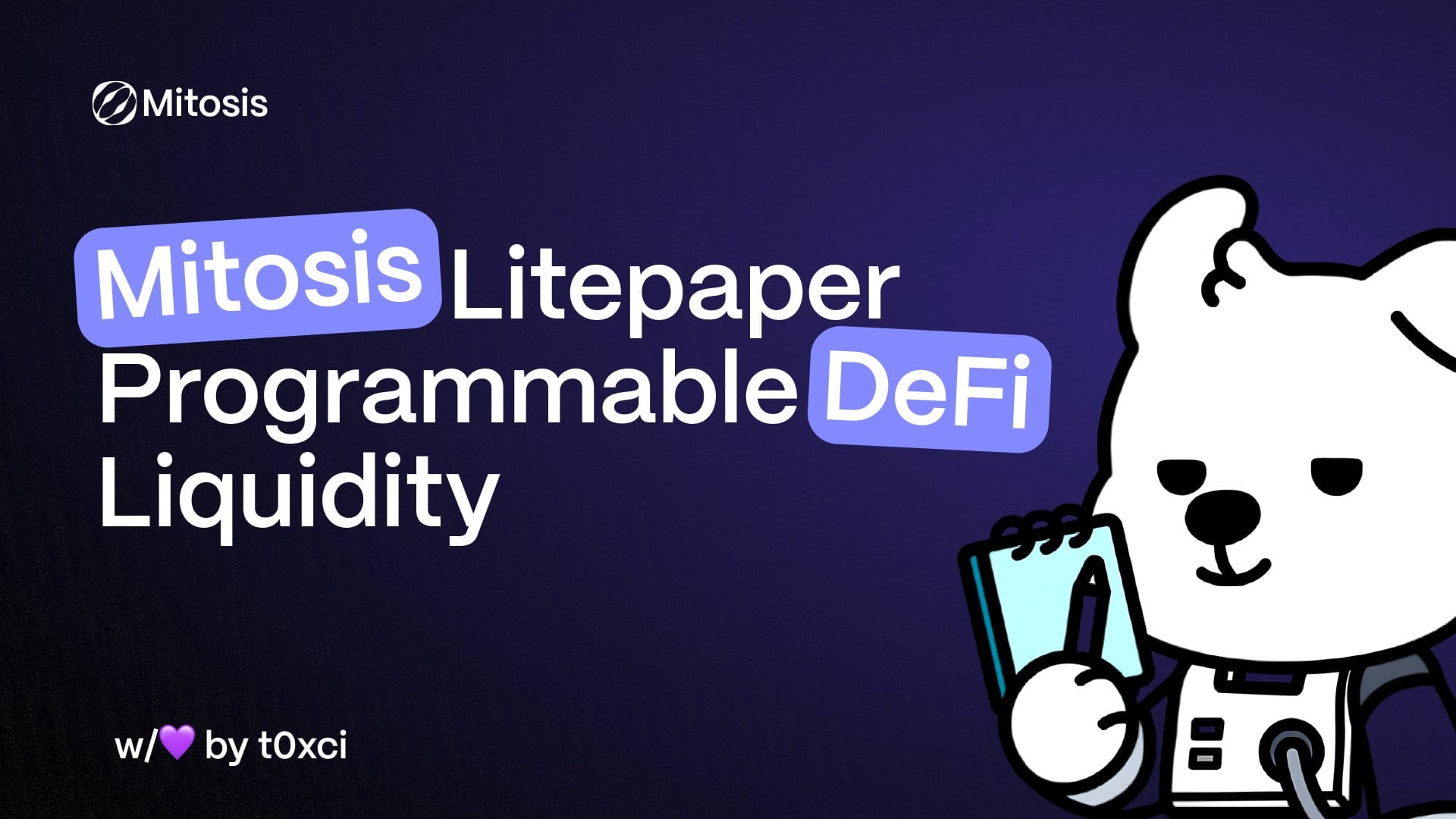
Democratized Access to Preferential Yields
Mitosis pools liquidity from individual participants, leveraging collective bargaining power to negotiate better yield opportunities. This levels the playing field, allowing smaller investors to access previously exclusive financial benefits.
By fostering a more inclusive market, Mitosis enhances overall liquidity distribution and efficiency.
Liquid LP Positions
Mitosis introduces miAssets and maAssets — tokenized representations of liquidity provider positions. These assets can be traded, restructured, and utilized in
several DeFi applications on the Mitosis Chain.
By making LP positions liquid, Mitosis unlocks new possibilities for capital utilization, including risk management and enhanced yield strategies.
Liquidity Capital Market
Beyond just tokenizing LP positions, Mitosis establishes a dedicated infrastructure for liquidity markets. This allows for the creation of sophisticated financial products, enabling investors to engage in dynamic capital strategies that were previously unavailable.
With transparent pricing mechanisms and enhanced risk management tools, Mitosis fosters a more sustainable and resilient DeFi ecosystem.
Protocol Architecture
At its core, the Mitosis protocol is designed to enhance the efficiency and utility of DeFi liquidity. It achieves this through three interconnected processes:
Each of these plays a crucial role in ensuring seamless liquidity movement across different blockchain ecosystems.

Deposit Process: Secure Custody and Composability
Mitosis Vaults, deployed across multiple supported blockchains, serve as the foundation for secure asset custody. These smart contracts not only safeguard assets but also facilitate flexible liquidity deployment.
The modular design of Mitosis Vaults allows for compatibility with various asset types and DeFi protocols, ensuring smooth integration across different chains.
When users deposit assets into Mitosis Vaults, they receive Vanilla Assets, which represent their deposits within the Mitosis ecosystem. These Vanilla Assets exist on the Mitosis Chain and act as programmable tokens, enabling users to engage in additional DeFi activities.
The ability to deposit assets, receive Vanilla Assets, and later withdraw by burning these tokens is what makes Mitosis a game-changer in programmable liquidity.
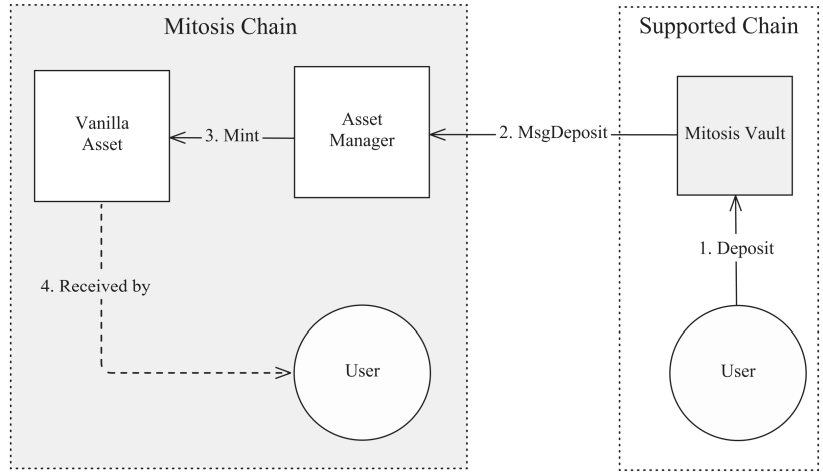
Supply Process: Yield Opportunities Through Mitosis Liquidity Frameworks (MLFs)
The supply process allows users to put their Vanilla Assets to work by participating in yield-generating liquidity campaigns. Users can browse available opportunities, select preferred campaigns, and commit their Vanilla Assets to earn returns. Mitosis facilitates this through structured liquidity mechanisms known as Mitosis Liquidity Frameworks (MLFs).
MLFs define the relationship between liquidity providers (Mitosis LPs) and DeFi protocols running liquidity campaigns. These frameworks lay out key terms such as reward distribution, campaign duration, and lock-up conditions.
By leveraging MLFs, Mitosis ensures an organized and transparent approach to liquidity deployment. The protocol launches with two primary frameworks: Ecosystem-Owned Liquidity (EOL) and Matrix, each operating with its own asset type (miAssets for EOL and maAssets for Matrix).
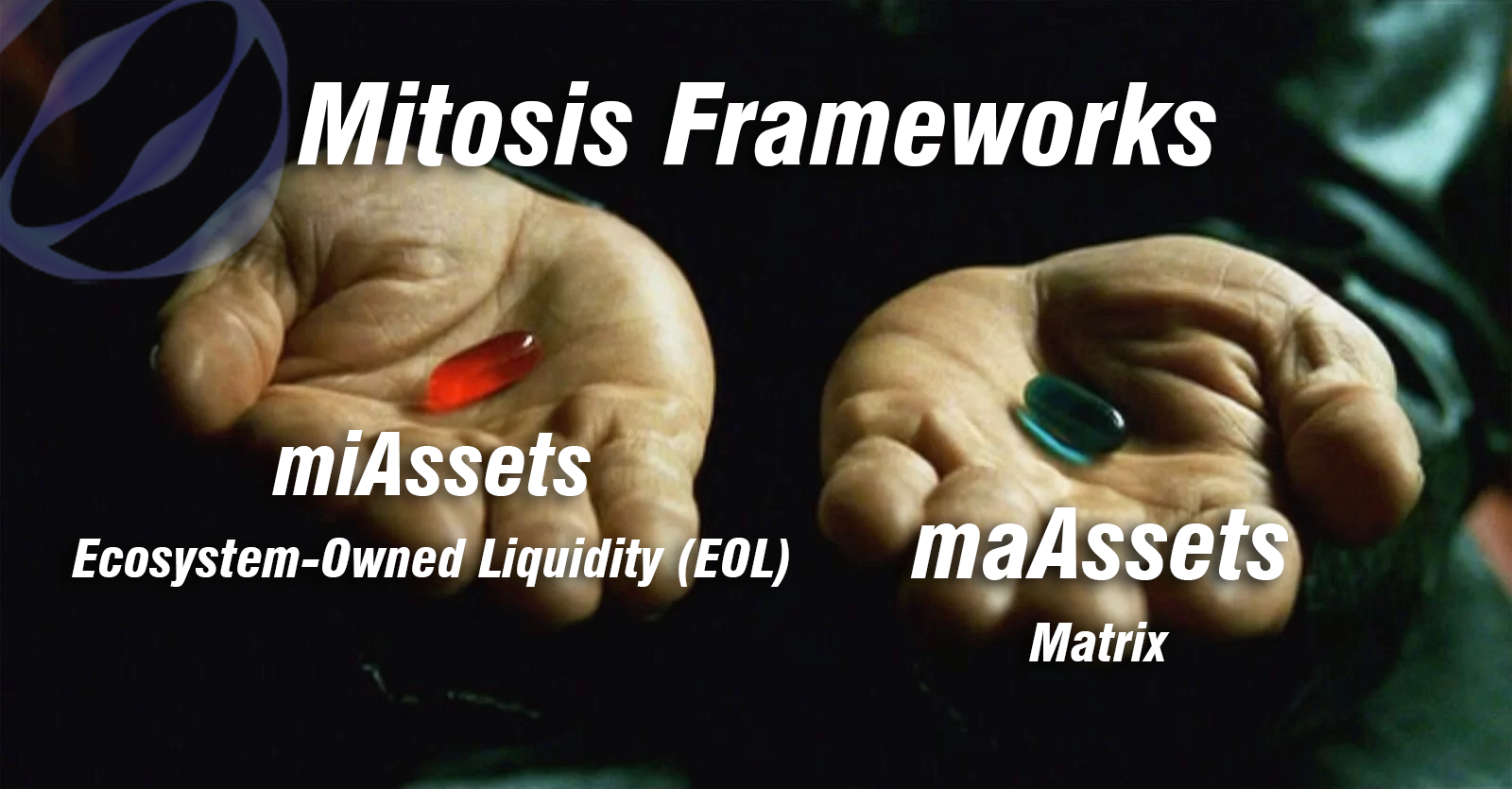
Ecosystem-Owned Liquidity (EOL): A Governance-Driven Approach
EOL takes a governance-centric approach to liquidity management. When users supply Vanilla Assets to EOL, they receive miAssets, which provide them with economic rights over underlying assets, yield distribution, and governance participation.
Through EOL, liquidity allocation decisions are made collectively by miAsset holders, ensuring a decentralized and transparent management system. The EOL governance structure operates through a two-phase process:
Initiation
This phase integrates new DeFi protocols into the EOL framework, allowing them to become eligible for liquidity support.
Gauge Governance
In this phase, miAsset holders vote on how liquidity should be allocated among approved protocols, ensuring continuous optimization and balance within the ecosystem.
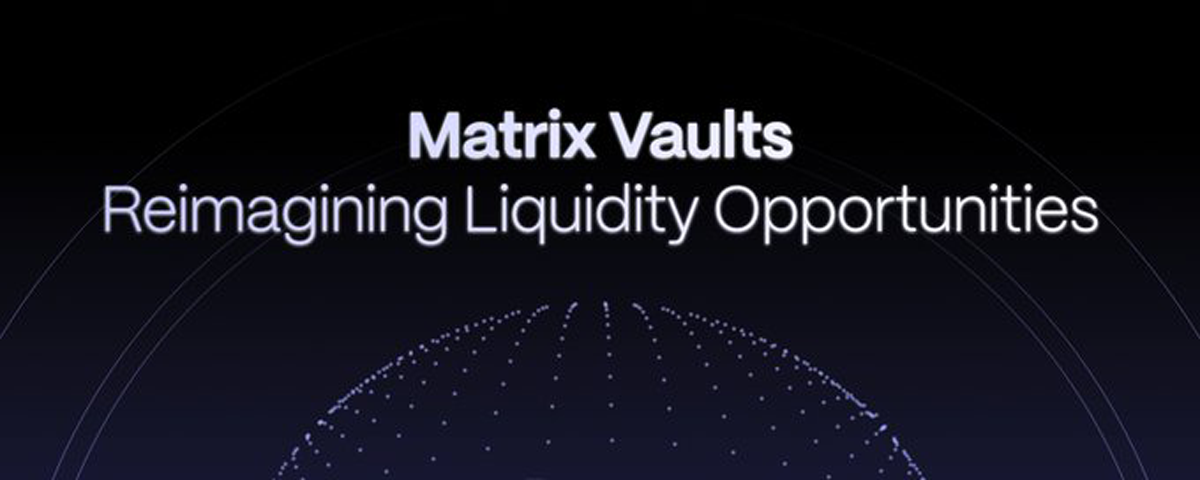
Matrix: Curated Liquidity Campaigns
One of the standout components of Mitosis is the Matrix liquidity framework, designed for DeFi protocols seeking time-bound liquidity. Unlike the Endless Order Loop (EOL) model — where deposits are aggregated and deployed through decentralized governance — Matrix empowers individual participants to choose specific liquidity opportunities that align with their investment strategies.
Matrix Vaults redefine liquidity provision by allowing users to withdraw anytime, forfeiting rewards instead of enforcing strict lockups. This approach fosters long-term participation while maintaining flexibility. Tokenized positions (maAssets) enable:
- Flexible liquidity without mandatory lockups
- Programmable yield distribution
- Composable positions across DeFi
- Cross-chain liquidity deployment
Participants receive maAssets as on-chain receipts representing their locked positions. For instance, committing Vanilla ETH to a campaign named “XYZ” results in the issuance of maETH XYZ, which tracks the investment and reward eligibility.
Once the campaign concludes, participants redeem their maAssets for the original deposit plus accrued rewards — whether distributed periodically or as a lump sum.

Beyond Traditional Liquidity Mining
Matrix Vaults improve upon traditional liquidity incentives by prioritizing structured reward distribution over unsustainable token emissions. Early users earn rewards based on contributions rather than speculative high yields. Features include:
- Lending protocol integrations for optimized yield
- Stablecoin strategies enhancing capital efficiency
- Multi-step yield optimization
- LP token staking and locking for sustainability
Tackling Mercenary Capital
Matrix Vaults address short-term liquidity flight by redistributing forfeited rewards from early withdrawals to long-term participants. This mechanism discourages speculation without imposing rigid restrictions, fostering a stable liquidity pool. Over time, as rewards compound, protocols gain greater liquidity predictability and sustainability.
By promoting long-term alignment and dynamic rewards, Matrix Vaults offer a resilient and community-driven solution for DeFi liquidity management.
Utilize Process: Making Liquidity Programmable
Programmable liquidity in Mitosis is powered by the Utilize process, where tokenized LP positions become building blocks for complex financial applications.
Through the Deposit and Supply mechanisms, Mitosis converts otherwise static liquidity into miAssets and maAssets, which can be pooled, traded, and incorporated into smart contract-driven financial instruments.
By leveraging the Mitosis Chain, an EVM-compatible blockchain built for liquidity programmability, developers can create applications that dynamically manage liquidity positions.
This turns traditionally illiquid LP assets into active components that can be optimized for risk management, capital efficiency, and yield generation.
Infrastructure for the Liquidity Capital Market
Mitosis is not just a liquidity framework — it is building a full-fledged liquidity capital market, offering infrastructure that enhances the accessibility and efficiency of liquidity management.
Several core financial primitives form the backbone of this ecosystem:

Automated Market Making (AMM)
Mitosis features advanced AMM protocols that enable efficient asset trading, price discovery, and deep liquidity management.
Yield Tokenization
A novel approach that separates yield-bearing tokens into principal and yield components, allowing users to speculate on yield trends independently from asset exposure.
Lending Markets
Mitosis enables various tokenized liquidity positions, including Vanilla Assets, miAssets, and maAssets, to be used as collateral. This expands capital efficiency by supporting leveraged yield farming and advanced trading strategies.
Yield-Bearing Stablecoins
Stable assets backed by diversified LP collateral that automatically accrue yield. This innovative stablecoin design blends risk mitigation with efficient yield capture to create assets that generate continuous returns.
Liquidity Indices
These indices aggregate LP positions into optimized investment portfolios, allowing users to gain diversified exposure to the Mitosis ecosystem with varying risk profiles. Liquidity indices offer a passive investment vehicle that balances risk and reward across different liquidity opportunities.
Key Developments Ahead
As the protocol evolves, three critical development areas stand out as key priorities for its future growth.
Expanding Liquidity with Multi-Asset Support
Right now, Mitosis follows an asset-specific liquidity provision model. For example, users can convert Vanilla ETH to miETH through EOL or obtain maETH via Matrix, ensuring consistent exposure to the underlying asset.
While this setup guarantees fungibility within single-asset contexts, it presents a challenge for protocols that rely on multi-asset pools, like automated market makers (AMMs).
AMMs typically require liquidity providers to deposit paired assets, generating rewards through trading fees. Since Mitosis currently focuses on single-asset liquidity, integrating a multi-asset provision model is a crucial next step.
Future development efforts will focus on creating a seamless way for users to provide liquidity for multi-asset pools while maintaining the benefits of programmable liquidity positions.
Optimizing Cross-Chain Liquidity Management
Mitosis already enables cross-chain liquidity deployment through its Vault system. When users deposit assets into a Mitosis Vault on any supported chain, they receive equivalent Vanilla Assets on the Mitosis Chain, keeping the total supply stable across networks.
However, this setup introduces two major challenges:
Managing Liquidity Distribution
Users withdrawing funds on different chains than they deposited can cause imbalances, concentrating liquidity in some areas while depleting it in others. The protocol needs mechanisms to ensure an even distribution of liquidity across networks.
Utilizing Idle Assets
Some networks may see less activity over time, leaving assets underutilized. Dynamic liquidity reallocation mechanisms could optimize asset deployment, ensuring funds remain active while maintaining sufficient withdrawal liquidity on all chains.
Addressing these challenges will be essential to maintaining a well-balanced, efficient liquidity system across the Mitosis ecosystem.
Enhancing EOL Governance for Smarter Capital Allocation
The EOL governance model aims to allocate capital efficiently through decentralized decision-making. However, in practice, two key challenges have emerged:
Low Participation Rates
Some liquidity providers struggle to engage in governance due to time constraints or technical barriers.
Expertise Gaps
The complexity of DeFi strategies means some participants lack the analytical skills to make optimal decisions.
To overcome these hurdles, Mitosis is exploring delegation mechanisms that balance efficiency with decentralization:
Stakeholder Delegation
Specialized delegate groups could manage governance responsibilities on behalf of liquidity providers. Users could opt in during the miAsset minting process, ensuring their capital remains actively managed without requiring hands-on participation.
Application-Level Delegation
Governance rights could be automatically delegated when users provide miAssets to Mitosis-based DeFi applications. This would allow apps to optimize capital allocation through programmatic analysis while maintaining user exposure to generated yields.
By fine-tuning governance participation and expertise integration, these improvements could lead to more effective capital allocation within the Mitosis ecosystem while upholding decentralized governance principles.

Final Thoughts
The launch of the Mitosis Litepaper is a big step forward for DeFi innovation. By turning liquidity positions into programmable financial assets, Mitosis is opening new doors for users to optimize and interact with their capital in smarter ways.
Whether through secure deposits, structured yield opportunities, or governance-driven liquidity strategies, the protocol is set to reshape what’s possible in decentralized finance.
From a technical standpoint, Mitosis has built a solid and efficient capital framework. According to a letter shared by Luke, Mitosis co-founder, on January 30, 2025, he believes that miAssets could deliver a default yield of ~20%, plus native token rewards — an exciting prospect for the DeFi space.
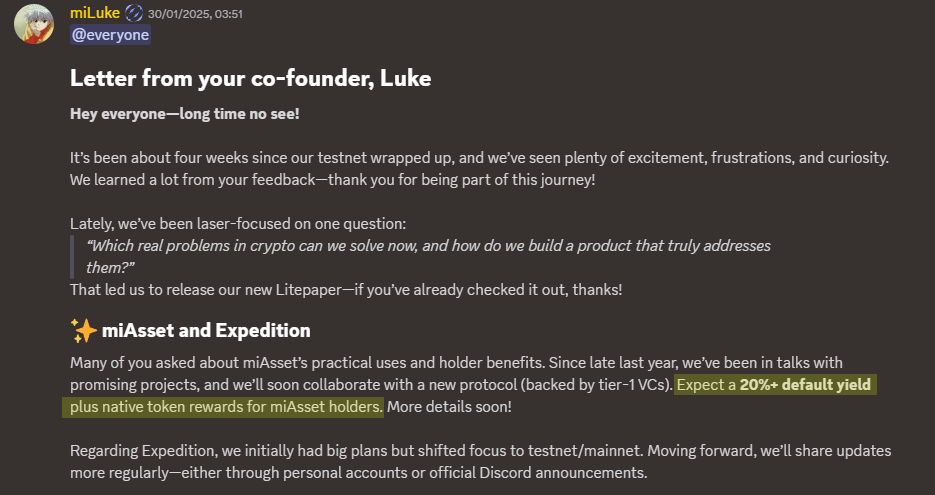
Now, the big question: WEN Mainnet?
The anticipation around the network’s mainnet launch and the $MITO token generation event (TGE) is growing.
Based on Luke’s letter, it seems we’re getting close, with some exciting announcements expected before the official launch. If everything goes as planned, this could be a game-changer for the crypto market.

Did you enjoy this content?
If it helped you in any way, I’d really appreciate your support!
Feel free to connect with me on Twitter/X, and if you’d like to send a Praise, my Discord is open too. 🙏
Thanks in advance for your trust and support—it means a lot! 🙌
Follow me on Twitter/X: febarce |DeFi
My Dircord: febarce |DeFi
Join the Revolution
Welcome to the exciting world of Mitosis, where you can be part of a groundbreaking journey in decentralized finance! I would like to invite you to join the Mitosis Expedition campaign, a unique opportunity to engage with the New Era for Programmable Liquidity.
Don't miss out on this chance to interact with Mitosis, earn rewards, and shape the future of DeFi. Join the Expedition campaign today and become an integral part of this evolving blockchain narrative!
For more details about Expedition Campaign, read the contents below:
• Website: https://app.mitosis.org/expedition/dashboard (my referral code: T19Z2D)
• Mitosis Discord: https://discord.gg/mitosis
• Galxe Quests: https://app.galxe.com/quest/Mitosis
References:
• Mitosis Litepaper
• Matrix Vaults: Reimagining Liquidity Opportunities
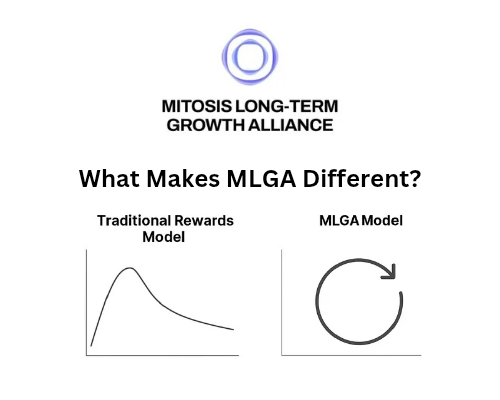
Comments ()